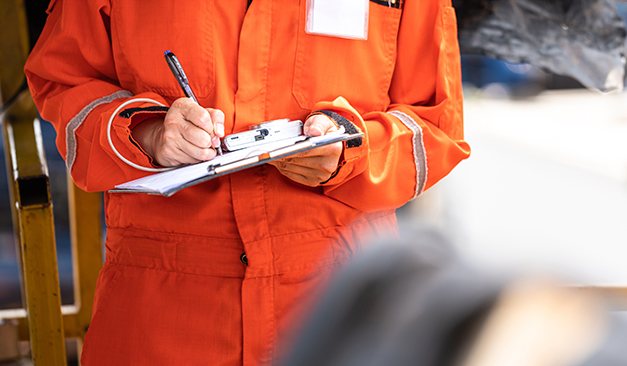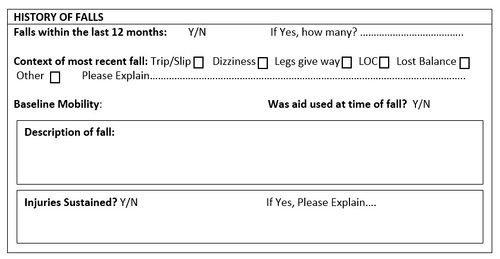Our Dementia Fall Risk Ideas
Our Dementia Fall Risk Ideas
Blog Article
Facts About Dementia Fall Risk Uncovered
Table of ContentsDementia Fall Risk for BeginnersThe Of Dementia Fall RiskThe 15-Second Trick For Dementia Fall RiskWhat Does Dementia Fall Risk Do?
A fall threat evaluation checks to see how likely it is that you will certainly fall. The evaluation typically consists of: This includes a series of inquiries regarding your overall health and wellness and if you've had previous drops or troubles with balance, standing, and/or walking.Treatments are referrals that might lower your risk of falling. STEADI includes 3 actions: you for your threat of dropping for your risk elements that can be improved to try to prevent falls (for example, balance problems, damaged vision) to lower your risk of dropping by making use of reliable methods (for example, supplying education and learning and resources), you may be asked a number of inquiries consisting of: Have you fallen in the previous year? Are you stressed concerning dropping?
If it takes you 12 secs or even more, it might mean you are at greater danger for an autumn. This test checks stamina and balance.
The positions will certainly obtain more challenging as you go. Stand with your feet side-by-side. Move one foot halfway ahead, so the instep is touching the huge toe of your various other foot. Move one foot fully before the other, so the toes are touching the heel of your various other foot.
The Main Principles Of Dementia Fall Risk
Many drops take place as a result of multiple contributing factors; therefore, taking care of the threat of falling begins with determining the aspects that contribute to drop threat - Dementia Fall Risk. Some of one of the most pertinent threat factors include: History of prior fallsChronic clinical conditionsAcute illnessImpaired stride and balance, reduced extremity weaknessCognitive impairmentChanges in visionCertain risky medications and polypharmacyEnvironmental factors can likewise raise the danger for drops, including: Poor lightingUneven or harmed flooringWet or slippery floorsMissing or harmed handrails and grab barsDamaged or improperly fitted devices, such as beds, wheelchairs, or walkersImproper use assistive devicesInadequate guidance of individuals living in the NF, including those who display hostile behaviorsA effective loss danger monitoring program needs an extensive scientific analysis, with input from all members of the interdisciplinary team

The care plan must likewise include treatments that are system-based, such as those that advertise a safe atmosphere (proper lights, handrails, order bars, etc). The effectiveness of the treatments need to be examined occasionally, and the care plan revised as required to reflect changes in the fall threat analysis. Applying an autumn danger monitoring system utilizing evidence-based best practice can reduce the frequency of drops in the NF, while limiting the potential for fall-related injuries.
The 2-Minute Rule for Dementia Fall Risk
The AGS/BGS guideline recommends screening all adults matured 65 years and older for autumn danger each year. This testing consists of asking clients whether they have fallen 2 or even more times in the previous year or looked for clinical interest for a loss, or, if they have actually not fallen, whether they really feel unsteady when strolling.
Individuals who have actually fallen when without injury must have their equilibrium and stride evaluated; those with gait or equilibrium problems need to get added evaluation. A background of 1 loss without injury and without stride or equilibrium issues does not call for more assessment past ongoing yearly autumn threat testing. Dementia Fall Risk. A loss danger assessment is needed as component of the Welcome to Medicare evaluation

The Best Guide To Dementia Fall Risk
Documenting a drops history is one of the quality indications for loss prevention and monitoring. A critical component of threat analysis is a medication evaluation. A number of classes of medications increase loss danger (Table 2). copyright medications in specific are independent predictors of drops. These medications often tend to be sedating, modify the sensorium, and harm equilibrium and stride.
Postural hypotension can usually be reduced by reducing the dose of blood pressurelowering medicines and/or quiting drugs that have orthostatic hypotension as see it here a negative effects. Use above-the-knee support tube and copulating the head of the bed elevated may also decrease postural decreases in blood stress. The suggested components of a fall-focused physical evaluation are revealed in Box 1.

A Pull time greater than or equivalent to 12 seconds suggests high loss danger. Being not able to stand up from a chair of knee height without making use of one's arms suggests enhanced loss danger.
Report this page